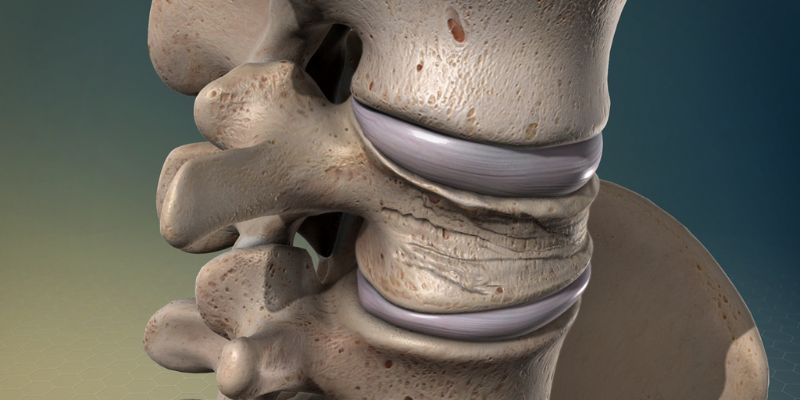Our mission at Straightspinecare.com is to be the go-to source for accurate information and excellent treatment options for all things related to spinal health. “What is the Treatment for Compression Fractures in the Spine” are the focus of this article as we investigate their etiology, manifestations, diagnosis, and management. It is our hope that this information will help you gain a deeper understanding of this issue and empower you to take charge of your spinal health.
Why Do People Get Compression Fractures?
When the vertebrae of the spine collapse or shatter under stress, this is called a compression fracture. They typically manifest in the thoracic (middle) and lumbar (lower) areas of the spine, and can cause severe discomfort and mobility issues. Compression fractures are more common in the elderly, especially in postmenopausal women, and are often the outcome of osteoporosis.
Factors and Causes
Compression fractures occur most frequently because of bone weakness, such as that caused by osteoporosis or a lack of bone density. Compression fractures can be caused by a variety of other reasons, though.
- Compression fractures of the spine are often the result of trauma, such as from heavy lifting or a fall from a great height.
- Multiple myeloma and other cancers that spread across the body can weaken the bones of the spine, increasing the risk of fracture.
- Compression fractures are more likely to occur in a weakened spine caused by conditions such as spinal stenosis or degenerative disc degeneration.
Symptom Recognition
Symptoms of a compression fracture may include:
- Pain in the back that comes on suddenly and gets worse with movement or pressure.
- shortening of stature or hunching over.
- Inability to move about easily and conduct routine tasks.
- Pain or numbness that spreads across the legs or the abdomen.
- Weariness and a sense of unease.
It is critical to consult a doctor right away if you encounter any of these symptoms so that you can get a proper diagnosis and treatment.
Compression Fracture Diagnosis
Different diagnostic tools are used by medical practitioners to determine the presence and severity of compression fractures. Among these are possible examples:
- Clinical Past: The fracture investigation will involve questions about your symptoms, health background, and any recent injuries or accidents.
- The doctor can gauge your level of spinal health and your entire range of motion by doing a thorough physical examination.
- Diagnostic Imaging Procedures X-rays, MRIs, and CT scans can produce high-resolution images of the spine, allowing for the precise localization and identification of compression fractures.
- Osteoporosis can be diagnosed in part through the use of a bone density test, such as the dual-energy X-ray absorptiometry (DXA) scan.
Choices in Medical Care
Here at Straightspinecare.com, we know how crucial it is to tailor treatments specifically for each individual patient. Compression fractures can be treated in a number of ways, some of which depend on the severity of the fracture, the reason for the fracture, and the patient’s general condition. Typical methods of treatment include:
- Treatment of Pain: Compression fracture pain can be treated with over-the-counter or prescription pain relievers. Back braces are another option that may be suggested by your doctor to aid in the healing process.
- Downtime and Adjustments to Daily Routine: Getting enough sleep is essential to recuperating quickly. Gentle exercises and physical therapy can help in recovery and restore mobility, as can avoiding activities that aggravate pain or strain the spine.
- Methods With a Small Incision: Vertebroplasty and kyphoplasty are two such treatments that are performed with a minimally invasive incision in order to treat spinal conditions. In order to stabilize the spine and provide pain relief, these treatments entail injecting bone cement into the damaged vertebrae.
- Treatment for Osteoporosis: If osteoporosis is to blame for the compression fracture, then taking care of the bones is of the utmost importance. In order to strengthen bones and forestall future fractures, this may involve dietary changes, nutritional supplements, and medicines.
Safety Precautions
Compression fractures can be avoided if proper precautions are taken. Here are some precautions to take to keep your spine healthy and lower your chance of fractures:
- Eating a well-rounded diet that includes plenty of calcium and vitamin D can help keep your bones strong and healthy.
- Exercising On a Regular Basis: To improve bone density and general health, you should do weight-bearing workouts like walking and resistance training.
- Preventing Falls: Remove any potential trip hazards in your home, install handrails on any staircases, and always wear shoes that provide adequate traction.
- Regular bone density testing can help diagnose bone loss at its earliest stages and direct subsequent preventative care.
Conclusion
In conclusion, life with a spinal compression fracture can be severely compromised. Effective management of this illness is possible once the causes, symptoms, medical attention, and therapy choices have been identified and explored. Here at [Your Company Name], we are dedicated to restoring our patients’ spinal health and general well-being by employing only the most advanced methods and techniques.

